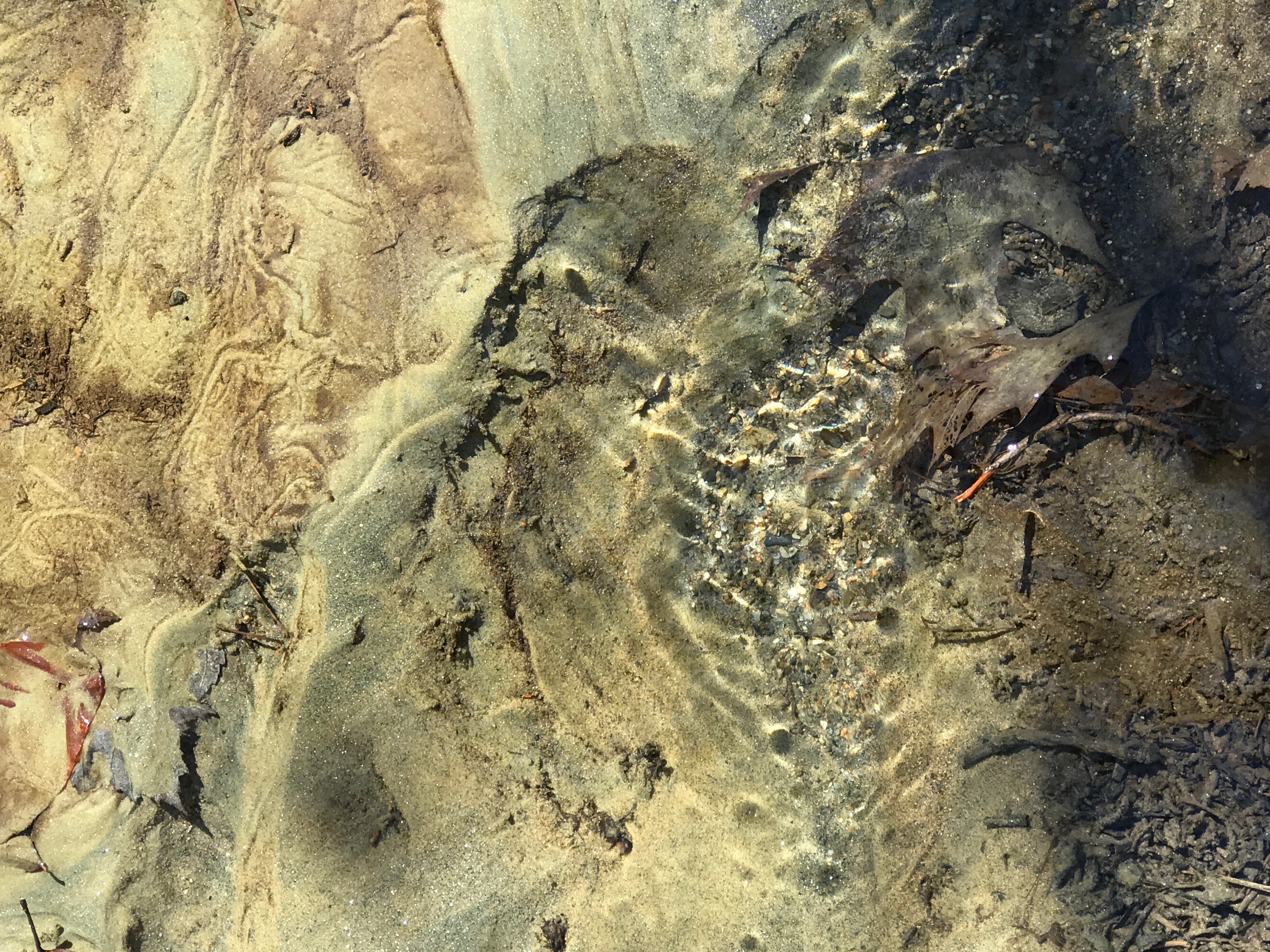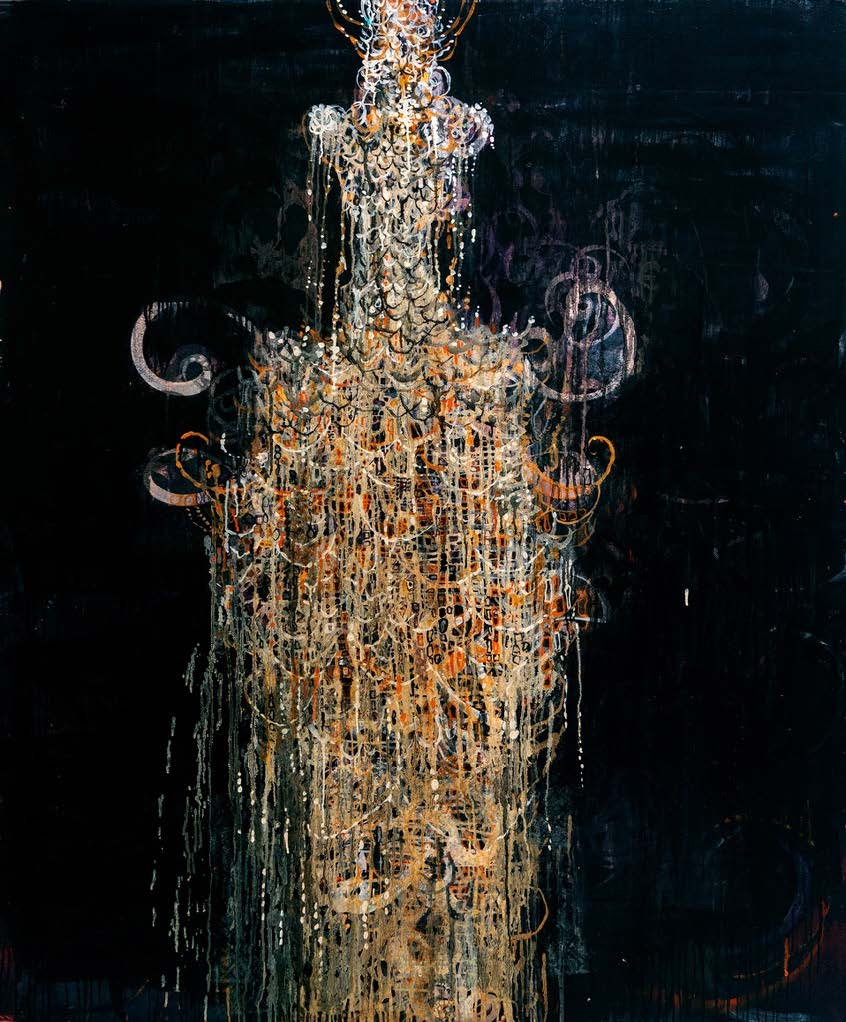only inter-happenings keep happening

Weber's Freischütz Overture. The conductor: a rakish Carlos Kleiber. He taps in the orchestra on a pp - and stops it right away. No so forward, he warns his men (year 1970) - come in after everybody else. Nonsense - but it works exactly as asked, uncannily emergent: e nihilo omnia.
It's this sheer contingency of things that piques - and illumines - our basal thought. Such thinking is both a navigational vessel and its own flight. It is itself coemergent, and can be self-sailed in a Möbius way.
If affect = affecting + being affected, then reality may be so glimpsed: Affect affects affect, where the noun verbs its own becoming. Affect < affectus, at once singular and plural. Being/s, knowing, happening, any change or constancy, are affect; so are energy, matter, their antitheses, information, ∆, spacetime, at any scale or intensity, in whatever direction(s) or framing. Everything is a differential, metabolic play of affect through the virtual, actual, hidden/absent - in sum, interaffect.
Of consequence, systems, as complex interaffects, are illusionments, affects playing together. Internet and tech convergence, biomes, galaxies, cultures - even simple cells and atoms, are illusionments. They can slide into visibility or consistence or not - either being an affect. Everything can be dis/affected, undone, thus also dis/illusioned, but that is not the end of affect - only its reaffecting.
History or narrative, at any scale, is also a series or web of illusionments, as are its Zeitgeiste, material sub- or superstructures. As singular-plural affects, we live in perpetual dis/illusionment, and can affect (change or make up) things (affects) in relation to all other affectivity. So can other affects - together playing out the grand commeatus (trafficking) that is throbbing reality.

Julia Kane
Away with problems; we've had enough of them!
"Problem solving" has loitered almost as long as Western thought. From the Problemata of Pseudo-Aristotle and of Plutarch and their Medieval turn into Scholastic quaestiones, to the modern Cartesian legacy of science, technocracy, and computation (with its algorithms and AI), the "problem" has squatted the realm of thought and practice - and outpaced its own usefulness.
This problem-solution model feeds on the subject-object distinction prevalent in Indo-European linguistics and hardened by the broader Western metaphysics of dichotomies: the exterior/interior, singular/plural, material/intellective, active/passive, individual/collective, etc. Descartes' res cogitans and res extensa codified this binary logic right into problem solving by progressive discretization (a riff on Scholastic clarification), which now undergirds modern computing and digital technology as much as genetic and nano-technologies and particle physics.
The logic of the problem also drives capitalistic economy, tied as it is to "problems" of shortage (or excess) - of supply and demand in labor and material, goods, and services. Each problem can be "solved" by requantifying something. What's less evident is that "solutions" are often devised as a function of some unstated desire, then the problem retrofitted to ratify it. Thus new markets are "found", goods are obsolesced, and the cycle of merchandise geared to fiscal years and quarterly reports. In this sense, problems become not accidental, but embedded, necessitated as a continuous invention. Nowhere is this more transparent than in the academy.
The "problem" with the "problem" is that it presents as a volumetric exteriority, isolated in its clinical scope. But as in the modern pharmacology built on this model, effects are not governed by original desire. There are leaks, side effects, which in turn generate new "problems" - hence the proverbial pharmaceutical cocktail, in which drugs don't just work with but also against each other. The best of efforts in problem-solving, say, polio eradication, spawn new challenges to the affected population. The foreignness of vaccines provokes antagonism, the capacitation they offer may strain employment, and social hierarchies have to be recalibrated.
There is an analogy between classical mechanics and problems in that their utility obtrudes at certain scales but not others. At most the pair can fix a car. In contrast, the apocalypses unfolding around us in ecology, economics and technobiopolitics can only laugh at the problem-solution model, captive - and instrumental - as it is to the very forces that produce such monsters. Like wars on poverty, drugs and terror, our "problems" are at best misnamed and botched in framing - at worst, maliciously instrumentalized.
Against the closed system and political economy of the isolated problem, Mangroves reconceives complex and large-scale challenges in terms of periblems. Arising organically from our basal thought-vehicle of (inter)affectivity, the periblem (< Gk. peri, around + ballo, cast/throw) presupposes an immanent dynamic and ecology of unbounded interaffections (affecting/being affected), immersive to human and other subjectivities. We are always inside the periblem, part and constitutive of it. There is no one vantage point to measure its whole. Rather, periblems are multilateral, -vectoral, and highly networked conditionings of reality and life. But just as the conditioning and actancy in a periblem are many-sided and thus to be construed beyond anthropic framings - starting from the question of "need," so is the possible addressing/inflecting of it. Periblems cannot be fixed or mended, much less by one human or group alone; they do not go away, but only evolve and develop differentially. We can only find ways to invite and enable from within the coactancy across identities, species, categories. In working through and inflecting periblems from their sublime interior, we begin to see "problems" cede to new possibilities and framings of reception, experience, and action. These then potentiate new arcs and mutations of reality.
This evolutionary pragmatics of the periblem guides the modus operandi of Mangroves as a collaboratory, whose very emergence is an unrestricted call to collaboration across all that affect and constitute life. It is the desire to recondition possibilities that impels our work of deep design.
we breathe immersed in the denumerable
let go and let go

Chandelier by Lisa Brody, used by permission
"Design nothing!" screamed Enzo Mari, the Italian maker who insisted on access for all to the production of useful forms. Implicit in his call is a firm commitment to equity across classes at a time when sleek mid-century design was also projecting an elitist privilege. In the vice grip twixt the homogenization and hyper-niching of Late Capital, we face the same trap still: design something sophisticated for higher-end consumption, or dispense with user agency altogether. As to wellbeing, it's either an act of insulation or callously abandoned to mass blight.
Mangroves rejects this dichotomy. In displacing the problem-solution habitus of our age with an inflective periblematics, we enlist deep study and thought, stepping into the length and breadth of things - wetness, movement, conflict or whatever, moving around their current patterns through many tellings and eyes. Out of such variegation we discern threads of commonality, intersection or overlap - and uncommonable specificities. In this way, history and theory dance with data and speculation, facts with intuition, and critique with creation. It is in such a staging of things that happy mutation emerges.
From what does such mutation diverge? It threads a path out of the overwhelming violence and inertia of the technosphere, that juggernaut of growth and accumulation at the cost of all, where even extreme prerogative and power are deceived. Agency no longer stagnates at the apices of the money/power matrix but sees exertion unchained and a-teeming. In beginning to descaffold the conjuncture of neoliberal hyper-accumulation and ecological collapse - indeed deinventing the "resource," this new design, de-scripting rather than prescriptive, also begins to decenter humans and their devisings from the driving train of planetary becoming. Sovereignty is withdrawn from a few mega points to be tended across the nexus of the deep ecological horizon.
This morphs the process called design into one in which the center can be anywhere, and circumference nowhere. In practice, it invites and engages more-than-human communities in translocal networks from the ground up, soil to sky. The design interlaces coactancy wherever thinkable and is embedded with the awareness that the process will evolve with successive modulations in dancing with emergent needs and conditions.
© David U.B. Liu 2023